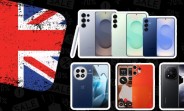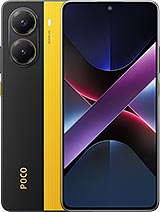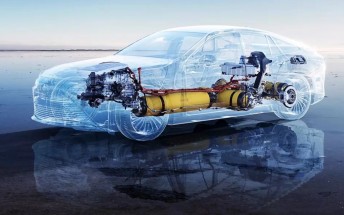Flashback: the post-post-PC era

When Steve Jobs unveiled the iPad in 2010, he declared that the Post-PC era is upon us. A few months later at the D8 conference, Jobs expanded on that, saying that PCs will stick around but in a much diminished capacity, saying that “they’re going to be used by like one out of X people”. Most people will be using tablets as their primary computing device.
Over a decade later it is clear that the PC isn’t going away. The iPad is a highly successful product for Apple no doubt, but few manage to get serious work done on one. Also, despite an ever-growing list of capabilities, the iPad still can’t do everything that Macs can.



An iPad Pro pretending it is a MacBook
Speaking of, the Macs did enter a post-PC era of a sort. “PC” is a generic term now, but it comes from the IBM PC – a microcomputer based on the Intel 8086. It didn’t have the graphical skills of an Amiga or a Macintosh, but became quite popular. Competing companies reverse engineered the design, creating “PC compatibles”, which is what led to the world domination of the x86 platform.
At the time Apple were using Motorola 68000 processors, which were considered fast until Intel came out with the Pentium. Apple would switch from Motorola to PowerPC processors. Then history repeated itself and Intels outperformed the best PowerPC chips, leading Apple to another platform switch, to Intel this time. Recently the company went through what might be its last platform switch as it replaced almost its entire Mac lineup with computers powered by Apple silicon. In that way the Macs – and some iPads – have entered a Post-PC era of sorts.

Apple is still quite reluctant to allow iPads to behave like desktop computers, though. The most recent iPad Pros are powered by the same Apple M1 chip as found in some Macs, but iPadOS is holding that platform back. Ironically, macOS can run iOS/iPadOS apps, but the opposite is not true. So, the PC – as in a desktop or laptop computer – is still ahead of the curve over tablets.
Other companies had a different approach to the Post-PC era – smartphones would replace PCs by becoming PCs. Microsoft did just that with Windows Continuum, a feature on Lumia phones that ran a standard Windows 10 desktop environment when connected to an external display. Add a keyboard and mouse and you edit an Excel spreadsheet like the best of them.

While Apple executed its platform transitions flawlessly, Microsoft struggled quite a bit. Windows RT was an attempt to bring the Windows 8 platform to ARM, but it proved to be a dud. Windows 10 is much better in that respect as it can run x86 software on ARM hardware – the lack of compatible software really hampered RT adoption (most software ever written for Windows was x86 based). However, by the time Windows 10 arrived, it was too late for the Lumias and Continuum lost its staging ground.
These days Microsoft is approaching from the other side – Windows 11 has native support for Android apps. The company even partnered with Amazon to secure a relatively well-stocked app store. Microsoft has a large suite of apps for Android and even dabbles with the occasional Android phone.


Android apps now run on Windows • Android and Windows apps side by side
Not that the Microsoft Surface Duo was particularly successful, nor its sequel. But it’s clear that Windows in a pocketable format will stay dead for now. We say that because no one has heard of the Surface Neo in a couple of years. It was a dual-screen device like the Duo, but it was going to run the now-canceled Windows 10X instead of Android.

Several other companies have dabbled with the desktop in a pocket concept. Let’s start with Motorola and the Atrix phones.
The Motorola ATRIX came out in early 2011 and was powered by an Nvidia Tegra 2 chipset. It had two Cortex-A9 cores (1.0 GHz), 1 GB of RAM and a GeForce GPU. The phone ran Android 2.2 Froyo out of the box, skinned with Motoblur UI. But that’s not why we’re here.
Two docks promised to turn the ATRIX into a computer. One was the Laptop Dock, a hollowed out 11.6” laptop shell that offered a keyboard, touchpad, speakers and a 36 WHr battery, along with some expanded connectivity (two full-size USB-A ports).

When docked, the phone ran a desktop version of Firefox, complete with Adobe Flash support. You could browse the modern web – well, as modern as it was in 2011. Add-ons were supported too, so you could extend the functionality of the browser, but you couldn’t install other desktop apps. You were instead limited to running Android apps on a mirrored version of the phone’s screen or web apps.
There was also the HD Multimedia Dock, which was intended for desktop use. It offered a mini HDMI port to connect to an external monitor, three USB ports and an IR remote control. The Entertainment Center handled multimedia playback and there was a native file browser.

The ATRIX was an ambitious project as were the docks. But few found the Laptop Dock to be worth its $500 price tag ($300 if you get it bundled with the ATRIX), even the HD dock wasn’t very popular despite its lower $100 price. Firefox chugged on the Tegra 2 chip and the software just wasn’t ready. In fact, Android still struggles with resizable apps, so a free-form desktop environment was too much to ask from Froyo.
2011 was quite a year, it also saw the introduction of the Asus EEE Pad Transformer TF101. We have already covered the story of the Transformers in detail. It culminated with the Asus PadFone – a phone that could go into a tablet dock, which in turn could be attached to a keyboard dock. A phone, a tablet, a laptop, all nested together like Matryoshka dolls.


The Asus PadFone is the smartphone version of a Matryoshka doll
The phone 4.3” AMOLED display (540 x 960px) was expanded to an 10.1” LCD (1,280 x 800px). The tablet dock added 6,600 mAh battery capacity, the keyboard dock added the same amount (the phone itself only had a 1,520 mAh power cell).
Okay, why were makers trying to squeeze a PC experience out of smartphones? Look at the Bill Of Materials (BOM) for a typical phone. The chipset, RAM and storage together tend to be the most expensive part of the phone. And those are exactly the things that the Atrix and Transformer docks skipped. The wireless connectivity components cost almost as much and Motorola and Asus were selling always-connected experiences – few laptops then (and now) have built-in mobile data connectivity.

So, (some of) the docks did have screens and those are also fairly expensive. But a dock still skips 2/3rds of the expensive components that go in a laptop. Then the docks make financial sense, right?
From the manufacturer’s point of view, sure. However, consumers never really bought into the idea. The ATRIX Laptop Dock cost as much as an under-powered laptop (and as established, the ATRIX was no speed demon), so people just bought one of those.
We are living in the future now. Samsung’s DeX – Desktop eXperience – is quite a capable system that does offer a proper desktop environment with multiple resizable and overlapping windows. It doesn’t even need a dock most of the time, a lot of new monitors have a dock built in, so all you need is a USB-C cable. DeX works with wireless screen mirroring too, so even the cable is not a hard requirement. And Samsung tablets can run DeX as their native interface, so you don’t even need an external display.
 Samsung DeX running on a Galaxy S9
Samsung DeX running on a Galaxy S9
Motorola is back with Ready For, also working over USB-C. Whether you use it for productivity or for gaming on a large screen, with much faster processors, improved software and services like game streaming, the phone-as-PC concept works better than ever.
 Motorola's new phones with Ready For are the rebirth of the ATRIX
Motorola's new phones with Ready For are the rebirth of the ATRIX
Asus is back too, and offers a dizzying variety of docks for its ROG phones. Some are focused on gaming, like the Twin View Dock 3, others on desktop gaming and productivity like the Mobile Desktop Dock.



Some of the many docks for Asus ROG Phones
Huawei has its own version of a desktop environment as well, even if we don’t see its phones as often as we used to.
Has the post-PC era finally arrived? Only if you wanted it to. The thing is that even without needing a dock, you still need a large display. If you need to carry it, you may as well carry a tablet or laptop. If you expect to find one on location when you arrive, what if you don’t? Or if there’s a PC there already (like in most offices)?
Apple M1 chips run both macOS and iPadOS. Snapdragon chips run Windows, not just Android. The CPU, RAM and storage are still some of the most expensive parts of a smartphone or computer. Those things haven’t changed, but neither have the negative sides of the dock life.
The funny thing is that computers have started absorbing smartphone features as fast as smartphones are doing the opposite. Instead of one branch of personal computing killing the other, they will probably merge into a single all-powerful class of device. We don’t quite know what that will look like, but as long as it’s not a Google Glass-style headset, we would be happy. Foldable phones (and laptops) may prove to be the better option.
Related
Reader comments
- Kangal
- 21 Apr 2022
- Px%
One major reason would be for the Cloud Market. That's rapidly expanding thanks to going mainstream with ADSL/4G, and now very usable thanks to Fibre/5G. So previously Intel had a strong dominance there, with the majority running Linux System ...
- Pumpino
- 21 Apr 2022
- vtx
Ahhh, you're not including ChromeOS tablets when you refer to tablets...or you at least consider them different offerings to android tablets. I understand. What are your thoughts on the Duet 5 vs Flex 5?
- dbjungle
- 21 Apr 2022
- S3%
Chrome OS offers significantly more functionality compared to iOS or Android. I think it's a fair point if we're comparing a small Android tablet to an Android phone. At that point your personal use case would be the differentiator.








 Samsung
Samsung Xiaomi
Xiaomi Samsung
Samsung Sony
Sony Xiaomi
Xiaomi


